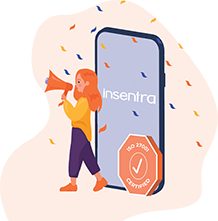Have you ever received poor technical support? Been told to wait on the line for two more minutes but are actually held for over half an hour? You have probably been told you are being transferred to another team that could assist you better, only to be dropped from the call entirely.
In this blog, we break down the anatomy of a contact and explain how it usually goes. Then we’ll delve into the customer service tasks we perform as techies before we tackle some of the common help desk customer service situations and how to deal with them. Lastly, we’ll uncover the different types of customers you can encounter.
Anatomy of a Contact
1. Greeting and validation – setting the stage of positive interaction.
It’s not just about the words we use, but the tone of our voice too. Service desk engineers should sound positive, upbeat, and not like we’re being inconvenienced or are unwilling to assist. Start with a friendly greeting and try to smile even though they cannot see you.
In validating their details and investigating their concerns, we can make use of the following type of questions:
- Closed questions – for when we need answers which are simply yes or no. These allow users to respond without having to provide a lot of extra information.
- Open-ended questions – these are helpful when users are confused about the type of information we’re looking for. It also helps us build rapport with the user, engaging them into a conversation.
- Probing questions – for when we need to ask follow-up questions. You must listen attentively to ask effective probing questions.
- Confirming questions – these questions are for clarifying specific details. It helps us to ensure we understand the information given to us.
2. Strive for the resolution
After we are done probing and troubleshooting, we strive for the resolution and we must leverage our resources. This could be Knowledge Base, Standard Operating Procedures or even other team members. If the fix is temporary or a workaround, teaching the users how to fix the problem is a great preventive step. To ensure success, have the user verify whether the resolution is successful. In times where the issue cannot be resolved during an interaction, then that is when an escalation would need to occur.
3. Escalation or ticket closure
If the call is for escalation, we need to make sure it’s well documented. We let the user know that we’re transferring the case to a team who will be able to assist them further and make sure the escalation team have all the details they need in order to help.
Once you’ve confirmed that the issue has been fixed, confirm the resolution with the user and proceed with the contact closure. Document the steps which resolved the issue and educate the user of the steps completed to fix their problem.
Customer Service Tasks
1. Putting a contact on hold
We need to make sure we give them the reason and in a friendly manner, so that users understand why we need to put them on hold and for how long. We can use the DATE technique – which is Describe, Acknowledge, Timeframe and Expressing gratitude.
- Describe using action verbs so the customer knows what we’re going to do. It should include a specific time frame.
- Acknowledge and confirm understanding. We want to make sure the user understands and agrees that to us placing them on hold.
- Timeframe should be exactly as what we have told them but if longer time is needed, make sure you update the user to let them know what is going on.
- Express gratitude and thank your customer for staying on the line.
An alternative would be using mute. Unlike hold, we’re still live with the user, and this is mostly used when there needs to be a short pause. This could be 15 seconds or less.
2. Escalation procedures
There may be some instances where an issue arrives in our queue which we do not support or can resolve. We must ensure we document the contact properly and route the user to proper support solution. Ensure the user has a good experience even though the contact is being transferred to a different team by using positive language.
3. Building Rapport
This creates a positive experience, allows the user to feel comfortable sharing and enables us to handle contacts more efficiently. Use positive words, avoid jargon, and empathize when necessary. When we need do it in writing, we must make sure we are using the right style, tone and choice of words. If we need to do it face to face, we use not only words, but also tone and body language. We must also refine our message by avoiding filler words or using negative language.
If we need to manage conflict then listen carefully, empathize, and acknowledge the conflict. We need to state what we know and determine how to resolve the conflict.
Common Help Desk Customer Service Situations
1. Recovering unsatisfied customers
The key components that are to use LEAD. Listen, Empathize, Apologize if needed, and Discover the source of dissatisfaction. Customers appreciate an apology, and even more without excuses attached to it. By using LEAD, we can recover our customers quicker with better success rates.
2. Say no without saying no and redirecting customers
Learning how to redirect customers and saying no are some of the situations we usually deal with. Before saying no to a user, confirm if the issue really is something which we cannot handle. Then, use positive language to inform them we cannot assist. Provide options, ideas or any information which could help them and offer as much assistance as we can.
Customer Behaviour Profiles
- Impassioned customers – For this type of customer do not focus on their emotions, instead focus on the solution. Use empathy statements and set proper expectations. Ask closed ended questions and try to determine the source of emotion.
- Combative customers – Our best advice is don’t take it personally. Keep moving, politely. Remain calm and don’t get drawn into the argument.
- Chatty customers – Do your best to handle them with professionalism but do not get distracted. Keep listening and repeat their name to get their attention when you need to politely interrupt. Maintain control of the conversation.
- Timid customers – Make sure to listen carefully to descriptive words. Ask more questions and make use of your tools (remotely access their machine, use video conferencing, or send an onsite technician).
Technical support and customer service work hand-in-hand. While technical and troubleshooting skills are necessary, creating a positive experience for our customers is part of our responsibility as Service Desk Technicians. We help users understand the technology they need assistance with, while providing them with excellent customer service.
To dive further into this topic, LinkedIn Learning (previously Lynda.com) is offering the courses, which I took to get a refresher of these skills. The course covered a lot of items that are beneficial to providing excellent customer service.











